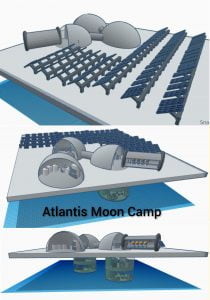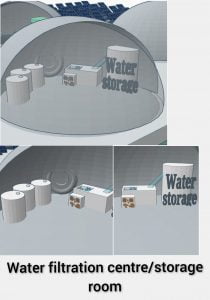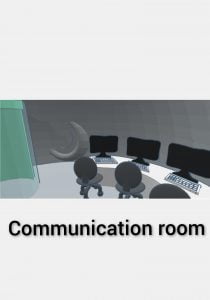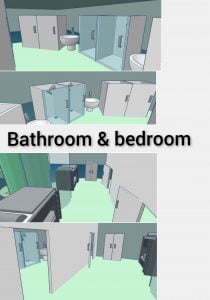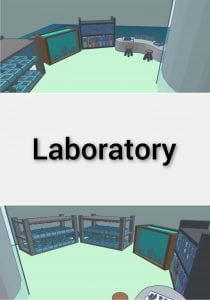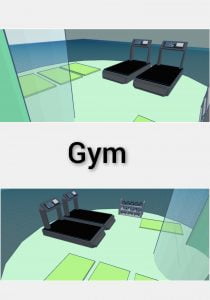Moon Camp Explorers Gallery 2020-2021
In Moon Camp Explorers each team’s mission is to 3D design a complete Moon Camp using Tinkercad. They also have to explain how they will use local resources, protect astronauts from the dangerous of space and describe the living and working facilities.
Team: ATLANTIS
IES XIMÉN D’URREA L’ALCORA Spain 13
External link for 3d
|
Project description
Our moon camp is named Atlantis because we decided that just like the fictional underwater City named Atlantis, we wanted to show that our camp could be just like it: something that looks magic, astonishing and incredible. But, comparing it to the actual Atlantis, our moon camp could get (we hope and believe) real one day. Also, there were a few missions with Space Shuttle Atlantis, so it’s also to honor the people that were involved in the missions. Our moon camp will be located in the South Pole, near Shackleton crater, in the Lunar lava tubes. Our Moon camp has a part located on the surface of the Moon (some of the principal modules) and the rest of it is on the underground, because the temperature there makes it more liveable. The underground part has easy access due to the surface modules connecting directly to the ones underground. |
|||
|
Where do you want to build your Moon Camp?
Near Shackleton crater Why did you choose this location?
We want to build our camp near the Shackleton crater and in the Lunar lava tubes in the South pole. We think that it’s a good place to build our camp because the temperature is more stable compared to the rest of the surface of the Moon (the temperature in the lava tubes is of -20Cº approximately). We also think that it is better to build our camp in the South pole rather than in the North pole because the Sun shines there most of the time, and thus, the solar panels can get more energy, and also because of the big quantity of ice that can be found in the craters. How do you plan to build your Moon Camp? Which materials would you use?
We will use lunar soil (also called regolith) to build the structure because it is very thick and resistant, so in case of a micrometeorite impact, it wouldn’t be very harmful. The regolith would be printed by 3D printers on the domes. There will be more than one layer for better protection. We will also cover the of our camp with carbon fiber, since it is resistant to fire, electric conductivity and corrosion, apart from being very resistant and light. Explain how your Moon Camp will provide the astronauts with:
|
|||
|
Water
|
Food
|
Electricity
|
Air
|
|
Our rovers will extract water from Shackleton crater, which will be the nearest crater containing lots of ice to our camp, but we will also take ice from other places in which it can be found. We will then turn the ice into water by filtration, and later use it for our plants, personal use, and it will also be stored so it can be used in case of an emergency. |
In our camp, we have planned to grow plants with |
We will produce power by placing solar panels outside the camp. Our camp is next to the Shackleton crater, where sunlight arrives most of the time, so producing power by using solar panels is one of the best solutions we could find. |
Air will be produced by electrolysis. The ice we collected from the craters gets turned into water, and then a part of the water is separated in oxygen and hydrogen. The resulting oxygen from this process will be used to provide our Moon camp with a breathable atmosphere. |
|
Describe a day on the Moon for one of your Moon Camp astronauts
The day starts with the astronauts waking up at 6 a.m. (Greenwich time). In our camp there will be 4 astronauts: a physician, a chemist, a biologist and an aerospatial engineer. Their day starts by having breakfast (until 06:30h) and they will later start working. Then, astronauts will go to the control room to make sure everything is working properly. During that time they will also connect with the Earth. This whole task will last about 30 minutes as well. At 07:00h, some of the astronauts will go to inspect and take different samples of the Moon. We think collecting samples by hand could be done for just a few weeks and then we would send rovers, and the astronauts would simply inspect the samples. After they finish inspecting samples, each one will go back to their department, and start working in order to learn more about the Moon. Lunch would be around 13:00h, lasting one hour. Then, astronauts would go back researching until 17:30 h. Then, they would exercise for two hours, until 19:30h, to keep themselves healthy. After exercising, they have half an hour free, and they can use that time to have a shower, or relax in the entertainment room. At 20:00h, they would have dinner for an hour, and at 21:00 they would have about 15 minutes to inform how their day was to their colleagues on Earth, and also talk to their family. |
|||


